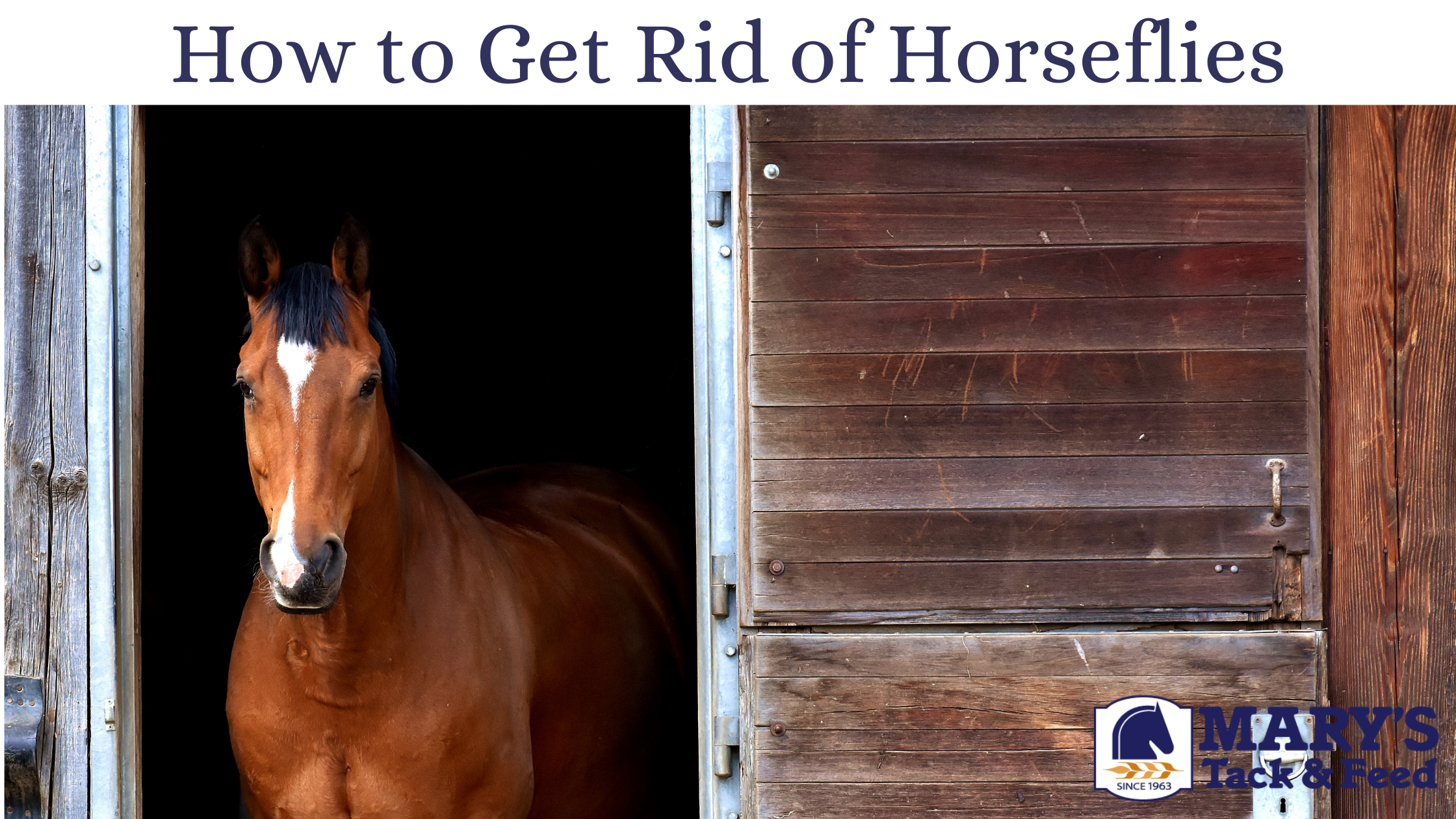How to Get Rid of Horseflies
Posted by Mary's Tack & Feed on 26th Feb 2021

Why Flies are Attracted to Your Horse
When the weather warms up, the flies come out and find their way to your stable, barn, and horses. These annoying insects aren't attracted to your animals as much as they're attracted to the byproducts surrounding your horses, like open feed containers, piles of manure and collected moisture.
One of the simplest ways to limit irritating flies from disturbing your horses is to keep your stables as clean as possible. Scoop up manure often and keep piles as far from your horses as you can. Clean up feed and water spills right away. Also, make sure there are proper drainage and ventilation (airflow) systems in place in horse confinement areas.

How to Keep Flies Off Horses
Clean stalls eliminate excessive moisture, which will limit the attractiveness of these areas for biting flies. Keep excessive stall moisture to a minimum by cleaning stalls and pens every day and get that manure away from your horses.
Keep a lid on waste products, food bins and other organic materials that might attract flies. Fans can increase airflow inside a stall. There's also pest control for stables you can consider using. A breezy environment can also help blow those irksome flies away.
Barn swallows and wasps are natural fly predators. If the wasps aren't out-of-control or bothering humans, they can become a natural ally, as can nesting birds that love to munch on insects.

Fly Control for Horses
There are a variety of options available for keeping flies off of horses, including fly spray, fly masks, and fly traps. Here are some of the most common tactics employed when figuring out how to keep flies off horses:
Horse Topicals: Topicals, which include gels, ointments, fly sprays and roll-ons (for around the face and eyes) repel and kill mature flies. If horses are bathed often or tend to sweat a lot, sweat-resistant topical sprays with insecticides are your best bet. Topicals need to be applied fairly often, although spot-on repellents deliver longer-lasting fly deterrent effects.
Fly Barriers: Barriers include boots, masks and sheets. The idea here is relatively self-explanatory: barriers physically block flies from attacking different areas on your horse's body. These areas include the belly and chest (sheets), lower legs (boots) and parts of the face (mask) and ears. Obviously, it's difficult to dress horses entirely in barriers 24/7, which means some areas will inevitably be exposed.
Fly Traps: If you want to catch and kill flies, fly traps are the way to go. Certain species of flies are attracted to bait, then die in or on the trap. Fly traps around your barn or stable can reduce the number of flies that make it inside your containment areas.
Feed-Throughs: Feed-through insect growth regulators (IGRs) can be added to horse feed. These growth regulators are safe for your horses to ingest. Once the feed-through passes through the digestive system, it will keep fly larvae from maturing into adult flies (i.e. insects that can take flight) inside dropped manure.
Property Insect Sprays: Building and property insect sprays, either carried out by you or a pest control service, can reduce flies substantially around your property. Be sure to use products that target the pests you want to control, and ensure the sprays used can be safely deployed around your animals.
Employ a Multi-Tiered Approach to Keeping Flies Off Horses
Clearly, a multi-tiered approach to horse flies is your best bet for managing these airborne pests. By keeping stalls clean and clutter free, reducing stall moisture (horse fly breeding ground), along with applying horsefly spray, fly traps, barriers and other control methods, you'll increase the effectiveness of your overall fly control strategy.
Stop mosquitoes and other biting insects from interfering with barn life and pestering your horses by employing a variety of approaches to get rid of horseflies and similar bugs for good.
